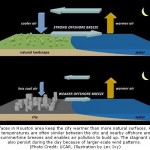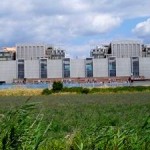Tanneries generate considerable quantities of sludge, shavings, trimmings, hair, buffing dusts and other general wastes and can consist of up to 70% of hide weight processed. The gasification technology, by virtue of chemically reducing conditions, provides a viable alternative thermal treatment for chrome containing materials, and generates a chrome (III) containing ash. This ash has significant commercial value as it can be reconstituted.
All of the wastes created by the tannery can be gasified following pre-treatment methods such as maceration, drying and subsequent densification or briquetting. A combined drying and gasification process could eliminate solid waste, whilst providing a combustible gas as a tax-exempt renewable energy source, which the tannery can directly reuse. Gasification trials have illustrated that up to 70% of the intrinsic energy value of the wastes currently disposed off can be recovered as “synthesis gas” energy.
A proprietary technology designated PyroArc, has been in commercial operation at a tanyard on the West Coast of Norway since mid-2001. The process employs gasification-and-plasma-cracking. The PyroArc process offer the capability of turning the tannery waste problem to a vaporizing source that may add values to the plant owner in terms of excessive energy and ferrochrome, a harmless alloy that is widely used by the metallurgical industry. The process leaves no ashes but a non-leaching slag that is useful for civil engineering works and, hence, leaves no residues for landfill disposal.
Biomethnation of Tannery Wastes
Biomethanation (or anaerobic digestion) systems are mature and proven processes that have the potential to convert tannery wastes into energy efficiently, and achieve the goals of pollution prevention/reduction, elimination of uncontrolled methane emissions and odour, recovery of bio-energy potential as biogas, production of stabilized residue for use as low grade fertilizer.
Anaerobic digestion is a favorable technologic solution which degrades a substantial part of the organic matter contained in the sludge and tannery solid wastes, generating valuable biogas, contributing to alleviate the environmental problem, giving time to set-up more sustainable treatment and disposal routes. Digested solid waste is biologically stabilized and can be reused in agriculture.
The application of an anaerobic treatment for the break down of COD from tannery waste water is an innovative and attractive method to recover energy from tannery waste-water. Until now, it was considered that the complexity of the waste-water stream originating from tanneries in combination with the presence of chroming would result in the poisoning of the process in a high loaded anaerobic reactor.
When the locally available industrial waste-water treatment plant is not provided by anaerobic digester, a large scale digestion can be planned in regions accommodating a big cluster of tanneries, if there is enough waste to make the facility economically attractive. In this circumstance, an anaerobic co-digestion plant based on sludge and tanneries may be a recommendable option, which reduces the quantity of landfilled waste and recovers its energy potential. It can also incorporate any other domestic, industrial or agricultural wastes. Chrome-free digested tannery sludge also has a definite value as a fertilizer based on its nutrient content.
Biogas produced in anaerobic digesters consists of methane (50–80%), carbon dioxide (20–50%), and trace levels of other gases such as hydrogen, carbon monoxide, nitrogen, oxygen, and hydrogen sulfide. Biogas can be used for producing electricity and heat, as a natural gas substitute and also a transportation fuel. A combined heat and power plant system (CHP) not only generates power but also produces heat for in-house requirements to maintain desired temperature level in the digester during cold season. CHP systems cover a range of technologies but indicative energy outputs per m3 of biogas are approximately 1.7 kWh electricity and 2.5kWh heat. The combined production of electricity and heat is highly desirable because it displaces non-renewable energy demand elsewhere and therefore reduces the amount of carbon dioxide released into the atmosphere.
Conclusions
The energy generated by anaerobic digestion or gasification of tannery wastes can be put to beneficial use, in both drying the wastes and as an energy source for the tannery’s own requirements, CHP or electricity export from the site. A large amount of the energy recovered is surplus to the energy conversion process requirements and can be reused by the tannery directly. Infact, implementation of waste-to-energy systems have the potential to make the industry self-sufficient in terms of thermal energy requirements. Tanneries are major energy users, and require up to 30 kW of energy to produce a single finished hide. Thus, waste-to-energy plant in a tannery promotes the production of electricity from decentralized renewable energy sources, apart from resolving serious environmental issues posed by leather industry wastes.
About the Authors

Sandeep Goel is pursuing Masters Program in Renewable Energy at TERI University, New Delhi, and has been actively involved in the development of waste-to-energy projects in India.

Ritika Tewari is a Masters student in Natural Resources Management at TERI University, New Delhi, with a passion for improving waste management and renewable energy scenario in developing countries.

Salman Zafar is a serial entrepreneur with expertise in biomass energy, waste-to-energy, waste management, sustainable development, alternative energy systems and clean-tech investment. Apart from managing his advisory firm, BioEnergy Consult, he is closely associated with a wide array of national and international clean-tech organizations. Salman is a freelance author and has been a significant contributor towards popularizing biomass energy and waste-to-energy systems worldwide through his articles.













